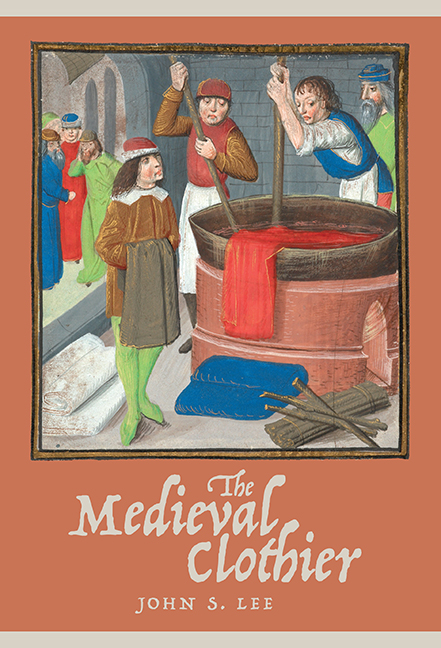Book contents
- Frontmatter
- Dedication
- Contents
- List of Illustrations
- List of Tables
- Acknowledgements
- Abbreviations
- A Note on Money, Weights and Measures, and Places
- Maps
- Introduction
- 1 Making Cloth
- 2 Marketing Cloth
- 3 Identifying Clothiers
- 4 Clothiers and Government
- 5 Clothiers in Society
- 6 Famous Clothiers
- Conclusion
- Appendices
- Gazetteer of Surviving Buildings
- Glossary
- Bibliography
- Index
4 - Clothiers and Government
Published online by Cambridge University Press: 02 June 2021
- Frontmatter
- Dedication
- Contents
- List of Illustrations
- List of Tables
- Acknowledgements
- Abbreviations
- A Note on Money, Weights and Measures, and Places
- Maps
- Introduction
- 1 Making Cloth
- 2 Marketing Cloth
- 3 Identifying Clothiers
- 4 Clothiers and Government
- 5 Clothiers in Society
- 6 Famous Clothiers
- Conclusion
- Appendices
- Gazetteer of Surviving Buildings
- Glossary
- Bibliography
- Index
Summary
English central and local government legislated extensively for the cloth industry as they sought to standardise goods, protect consumers, and monitor quality. In fact, cloth-making attracted so much attention from these authorities that one historian memorably described the industry as the ‘favourite child of the legislature’. This chapter explores this legislation, examining how clothiers helped to shape these policies, and how they operated within this regulatory framework. Governments became increasingly anxious to protect markets and employment within the textile industry. The cloth trade was a major contributor of revenue to the Exchequer, primarily through customs duties on cloth exports, but also through the subsidy levied on cloth sales known as ulnage. Governments were also aware though, that disruptions to overseas cloth sales created unemployment and unrest, and in the face of political protests by textile workers, they looked to clothiers to maintain production.
DEVELOPING LEGISLATION
Responsibility for regulating the making and marketing of cloth was divided between the Crown and local communities. While all places were subject to national legislation unless specifically exempt, the degree of regulation at the local level could vary considerably from place to place. Boroughs, with charters granted by the Crown or a lord to townspeople to exercise rights and privileges, issued a multiplicity of regulations. Guilds representing specific crafts might also have regulatory powers. In smaller towns and villages, where craft guilds were absent and control was exercised through the local court, there could be little or no intervention. It has been suggested that entrepreneurial ambition was deterred by the amount of regulation in many late medieval boroughs, and certainly most of the leading clothiers of the early sixteenth century were to be found in smaller urban settlements and rural areas which generally lacked these local regulatory institutions.
Borough governments and craft guilds
Many boroughs had liberties of tenure, trade, and local administration granted by the king or another lord to a defined group of members known as burgesses or freemen, who were distinct from the main body of inhabitants. These privileges varied from borough to borough, but generally included trading privileges derived from borough charters, ordinances and by-laws.
- Type
- Chapter
- Information
- The Medieval Clothier , pp. 157 - 190Publisher: Boydell & BrewerPrint publication year: 2018



